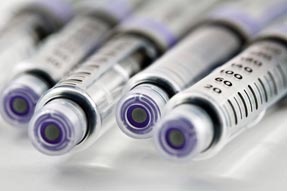Integrating routine HIV screening into practice
Routine screening has 2 main benefits: diagnosing HIV infection before patients become symptomatic and have lost the bulk of their immune system and preventing HIV transmission.
Today, HIV may be found in any health care setting, crossing boundaries of sexual orientation, gender, age and ethnicity. According to CDC statistics, more than 1.2 million people in the U.S. are living with HIV and 156,300, or about 1 in 8, are unaware of their status, which puts them at risk for the severest consequences of the disease. Undiagnosed, they may unintentionally transmit HIV to others. In fact, despite prevention efforts, the CDC calculates that the rate of new HIV infections has remained steady over the past decade at about 50,000 a year.
Routine screening has 2 main benefits: diagnosing HIV infection before patients become symptomatic and have lost the bulk of their immune system and preventing HIV transmission. Early diagnosis allows patients to be linked to care earlier, when they can benefit most from treatment. HIV-infected patients receiving early treatment have a good chance of nearly normal life spans.
An April 2015 study in JAMA Internal Medicine estimated that diagnosing unaware individuals and ensuring they receive prompt, ongoing care could avert more than 90% of new HIV infections in the U.S. Also, people who are aware of their HIV status modify their risk behavior. A 2005 meta-analysis in the Journal of Acquired Immune Deficiency Syndromes showed that people who know they are HIV-infected reduce their rate of unprotected sex with an uninfected partner by about 68%. An additional benefit is that as HIV screening becomes routine, the HIV test and the disease itself become destigmatized.
Unfortunately, in Kansas, my state, nearly one-third of patients infected with HIV meet the criteria for AIDS at the time of diagnosis. In our large general medical practice at the University of Kansas School of Medicine, it's not unusual to see patients present with advanced disease, coming in with symptoms of pneumocystis pneumonia or another opportunistic infection. Recently, a 56-year-old man, married and with grandchildren, came in with disseminated cryptococcal disease. He had never been tested for HIV. At this point, his immune system was down to 37 CD4 cells and he had an extremely high viral load.
To encourage early diagnosis and treatment and reduce transmission, the U.S. Preventive Services Task Force (USPSTF) recommends routine HIV screening in all adolescents and adults ages 15 to 65, regardless of risk factors, unless the patient opts out. Younger adolescents and older adults who are sexually active or injection drug users should also be screened, as should pregnant women in the first trimester of each pregnancy.
These recommendations align with the CDC's 2006 recommendation for routine HIV screening of all patients ages 13 to 64 and are supported by major medical societies, including the American College of Physicians, the American Academy of Family Physicians, and the American Congress of Obstetricians and Gynecologists. Other criteria include all patients starting treatment for tuberculosis and all patients seeking treatment for sexually transmitted diseases.
All persons likely to be at high risk for HIV should be tested at least annually and sometimes as often as every 6 months, depending on their level of risk. These include injection-drug users and their sex partners, persons who exchange sex for money or drugs, sex partners of HIV-infected persons, and men who have sex with men or heterosexual persons who themselves or whose sex partners have had more than 1 sex partner since their most recent HIV test.
Screening tests are easy to do, and several cost analyses have shown that routine HIV testing is cost-effective. It's easier to integrate screening into your practice when everyone in the office assumes responsibility, just as they do with all other standard patient tests. For example, standing orders that allow staff to help you remember to do routine HIV screening can be useful. HIV screening is covered by Medicare and health insurance without copay, as required by the Affordable Care Act.
Some clinicians hesitate to offer routine HIV screening to patients because they don't want to insult them or frighten them. Assuring patients that you offer the HIV test to all of your patients by saying “We do this routinely” or “I'm asking every patient to do this” can reduce anxiety. It also helps to equate HIV screening with other routine screening tests, such as colonoscopy for older adults, which are the standard of care. Logical explanations help normalize the situation and give patients more context for decision making.
Conversations about HIV screening don't have to go into great detail. The important thing is that when clinicians offer routine screening for HIV, they should be prepared for some patient confusion and fear and should use logic and reason to help put patients at ease.
The first time you bring up screening, some patients will say, “I don't want it. I don't need it.” When this happens in my practice, I give patients websites where they can look up the guidelines and see that HIV screening is now routine for everyone. When I bring it up again at the next visit, they will usually accept it.
When delivering a positive HIV test result, speak personally with patients. Reassure them that early diagnosis and treatment will help keep them healthy and that they have the potential to live long and healthy lives. Stress that early treatment not only protects them from the most serious consequences of HIV infection but also prevents transmission of HIV to others. Also reassure patients that they will receive HIV treatment and that a trusted HIV treatment expert will manage their care along with their primary care physician's continuing participation.
Explain to your HIV-infected patients that it is standard procedure for a trained counselor from the local health department to contact them. Let them know that through a confidential program called Partner Services, health department staff will notify sex partners or drug-injection partners of their possible exposure to HIV, without divulging patients' names. If your patients choose to notify partners themselves, Partner Services will give them guidance. Sex partners or drug-injection partners will be offered HIV testing, and if the test result is positive, they will be linked to care.
Most patients you screen will be HIV negative and will not need another test. However, repeat testing should be offered when patients change their sexual activity status, for example, if a middle-aged woman who has been in a monogamous, long-term relationship becomes widowed or divorced and begins dating again.
Routine HIV screening in primary care practices leads to an earlier diagnosis of HIV infection, which in turn links HIV-positive patients to lifesaving treatment, reduces morbidity and mortality, and lowers the risk of transmission to others. When more HIV-infected individuals get care and reduce their viral load, the community viral load is also reduced. Routine HIV screening is both the standard of care and the right thing to do.




